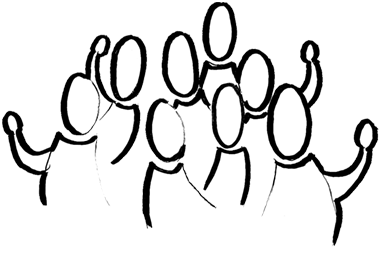 When I recently joined a new professional group of educators, READ East Harlem, Hunter College, I reflected upon how my experiences in education over the past years had prepared me to once again move forward in my learning. I wondered what I would focus on in this stage of my own professional development. My first thoughts were:
When I recently joined a new professional group of educators, READ East Harlem, Hunter College, I reflected upon how my experiences in education over the past years had prepared me to once again move forward in my learning. I wondered what I would focus on in this stage of my own professional development. My first thoughts were:
How do I fit into my new group?
What can I bring to this group to make it a valuable and rewarding experience for everyone?
I like “fitting in” and sharing, and I truly enjoy problem solving, which I think is a large part of making instruction work for adults and for children. As a result, I began looking through my professional books and recalling my work in various schools. I started to reread Systems for Change in Literacy Education by Carol A. Lyons and Gay Su Pinnell, 2001. They speak about the constructivist theory of education as a paradigm for implementing high quality professional development.
 The constructivist principles of teaching discussed in the book describe my approach to working with teachers –
The constructivist principles of teaching discussed in the book describe my approach to working with teachers –
-
encouraging active participation
-
organizing small-group discussions around common ideas
-
creating a safe environment
-
developing teachers’ conceptual knowledge through conversations around a shared experience
-
providing teachers with opportunities to practice what they know
-
looking for changes in teachers’ understanding
-
and providing continued experiences for teachers needing additional support
The book provides an in-depth description for working with teachers through demonstrating and coaching models in literacy. It provides such specific guidance as examples of the language used in coaching conversations and a scale for the analysis of mini-lessons.
As a result of reconnecting with Systems for Change in Literacy Education, I now have a road map to guide me in the challenges that I will encounter in my new adventure.
 I have always considered improving education to be an adventure. It is the excitement of finding a solution to a problem. How do we reach teachers and help them to become self-motivators and continue their learning? A part of the work is searching for these answers both within the literature, and the experiences.
I have always considered improving education to be an adventure. It is the excitement of finding a solution to a problem. How do we reach teachers and help them to become self-motivators and continue their learning? A part of the work is searching for these answers both within the literature, and the experiences.
Once we accomplish this, we begin to solve the problem of providing every child with the opportunity to be a successful learner. And in the process, remind ourselves that we’re all learners.

test
test